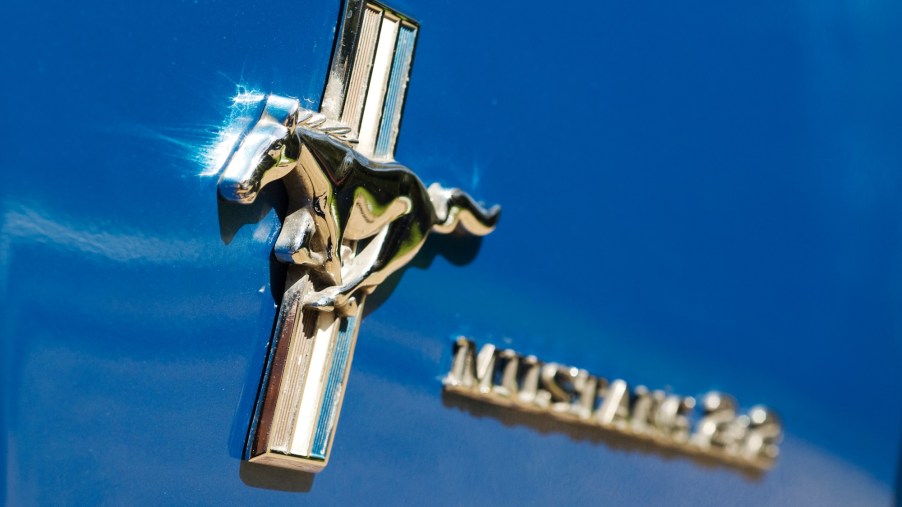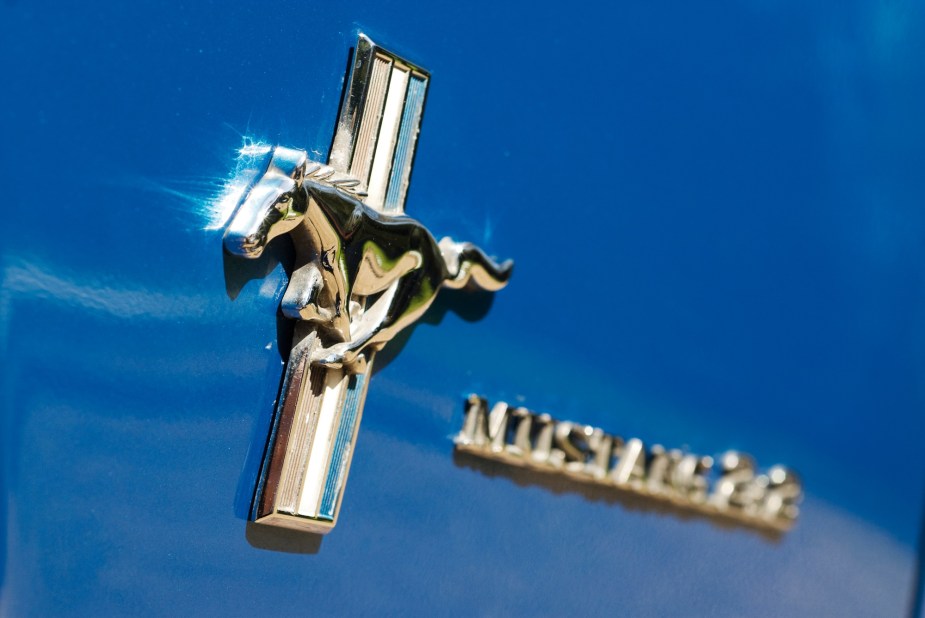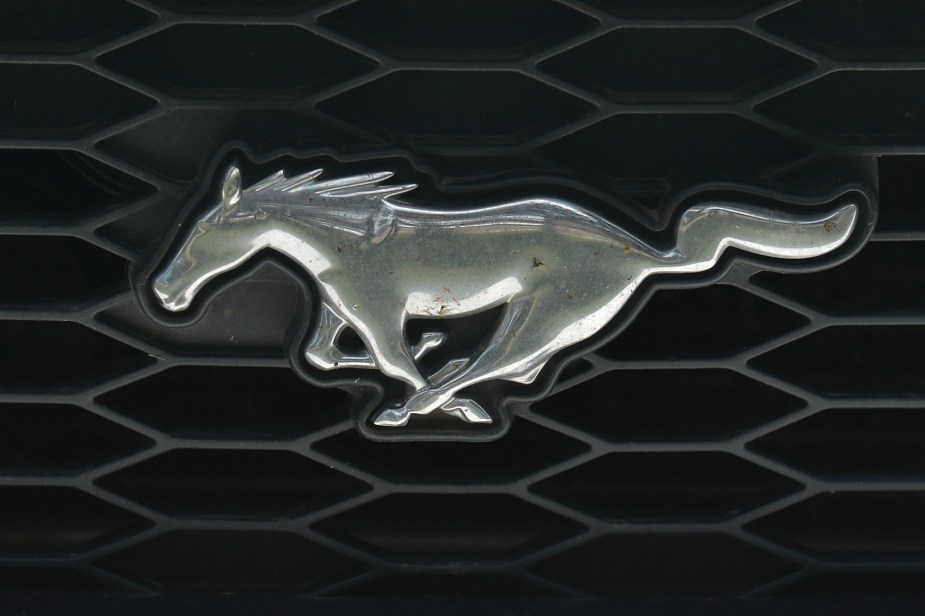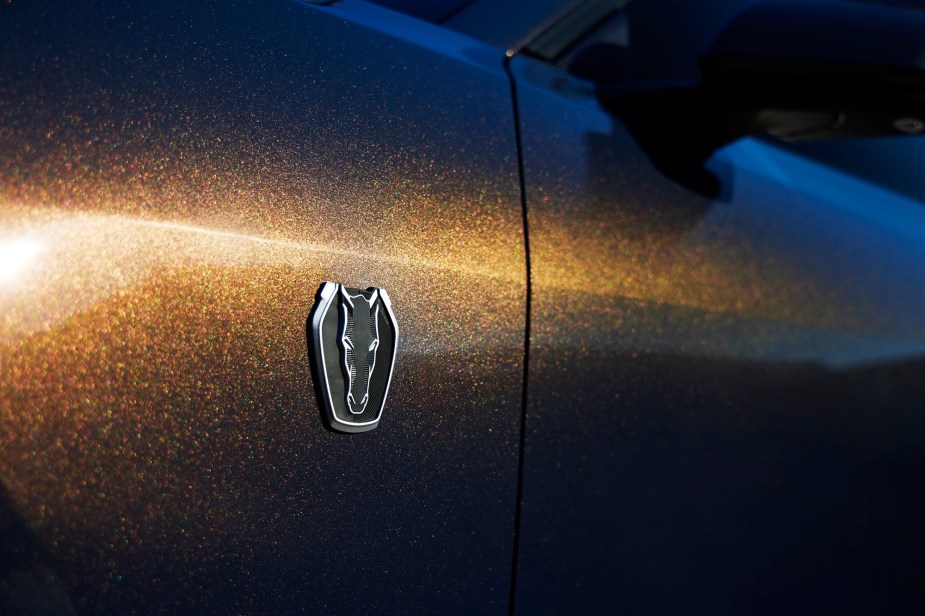
Ford Mustang Logos Aren’t Just Ponies
The Ford Mustang logo is one of the most recognizable emblems in car culture. The galloping pony represents nearly 60 years of Ford’s beloved pony car. However, the ever-changing horse logo isn’t the only badge Mustangs have worn over the years. Here’s a little about the beloved equine’s badge and some other emblems it has worn over the years.
What is the symbol for a Mustang?
The symbol for the Ford Mustang is a left-facing running pony, which some fans describe as a galloping pony. Whether you call it a horse or a pony, the emblem is instantly recognizable to fans, critics, and even indifferent onlookers. However, the first pony logo wasn’t a side profile but an angled perspective of the wild animal.

Still, the powers at Ford decided to emblazon the side profile of a horse so it looked as if the animal were racing on a track. The symbol isn’t always a chromed horse by itself, either. Many iterations of the badge included the horse superimposed over red, white, and blue tri-bar stripes.
Was the Mustang named after the horse?
Initially, one of Ford’s names for the little two-door car was “Cougar,” not unlike its Mercury sibling. However, the Mustang moniker prevailed, and Phillip Thomas Clark’s design for the galloping horse became the immortal symbol for the car. Of course, not everyone knows that Ford Mustang wasn’t named after a horse.

Instead, the venerable Ford model derived its name from the North American P-51 Mustang, a multirole fighter aircraft from the second world war. Still, the Ford Mustang’s logo isn’t a warplane but the speeding stallion we all recognize today.
Why is the Mustang logo facing left?
The Mustang logo faces left, but before the first production models, there was debate over the emblem’s orientation. Lee Iacocca was adamant that the galloping horse wasn’t a track horse. “The Mustang is a wild horse, not a domesticated racer,” Iacocca said. As a result, Ford’s Gene Halderman ensured that the horse was left-facing.
According to MotorTrend, some stories suggest that a left orientation might represent a free Mustang running west. Of course, another possible explanation would be that horses in professional racing face right on the track from a sideline perspective. That would make sense given Iacocca’s mandate that Mustang isn’t a “domesticated racer.”
Why does Mustang have a cobra logo?
Some Mustangs don’t have running pony emblems at all. For instance, one of the most popular badges to take the place of a Mustang. According to the popular narrative, the cobra is a name and emblem that appeared to Carroll Shelby in a dream. As a result, Shelby Mustangs, from the first GT350 to the latest supercharged GT500s, brandished a cobra badge. Also, the SN-95 generation SVT Cobras wear the cobra badge.

In addition to the stirring slew of Shelby Mustangs over the years, another non-Shelby Mustang took to the streets sans running pony emblem. The Ford Mustang Bullitt homage cars from the S197 and S550 generations are devoid of pony badging. Moreover, the new Ford Mustang Dark Horse packs a forward-facing horse head instead of “GT” side badges.



